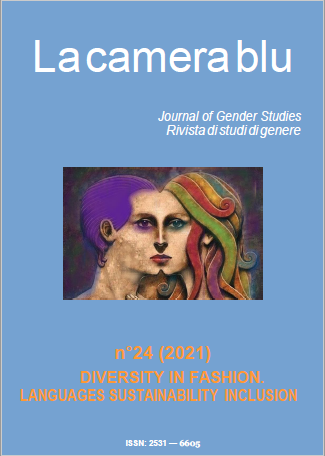Spanish female dress code through moral literature (1677-1691)
DOI:
https://doi.org/10.6093/1827-9198/8923Keywords:
woman, dress code, religion, sin, manualsAbstract
This article will analyze the discourse derived from two religious manuals focused on pointing out the correct female dress code, whose main task was to “educate” and “control” female manners and corporeality. The first document was authored by Juan Bautista, entitled Juicio theologico moral, que hace de las galas, escotados y aceites de las mujeres(Moral theological judgment made on woman’s gala, cleavage and oils) (1677); the second one written by Antonio de Escaray, Voces del dolor. Nacidas de la multitud de pecados, que se cometen por los trajes profanos, aceites, escotados y culpables ornatos (Voices of pain. Born out of sins committed by the profane garments, oils, cleavage and sinful ornaments) (1691). In the proposed in the aforementioned texts, the way women dressed was seen as normal everyday action, though it was invigilated to prevent lust conduct; given that, according to those manuals, when a woman wears accessories, such as jewelry or lace, elegant fabrics and cleavage, this provoked disorderly conduct and would “set off”1certain passions. In regards to that issue, Saint Augustine (San Agustín) mentioned that there are people who live carnally, in the pleasures of the flesh (&) inclined to the sensuality of the body (dressing and conducting yourself), whose “malicious” appetite is know as “Libido”; and that the clumsy and dishonest movements of the body provoked plenty of vices. The Magdalene is a clear example of “the sinful woman” by “presenting the ugliness, and abomination due to the filth of her clumsiness and profound abyss of vices”2. Her body and her senses, which belong to those of a whore, are portrayed as instruments of “pleasure and seduction, (showing) a proud look in her eyes, her long hair and naked body”.
Downloads
Downloads
Published
How to Cite
Issue
Section
License
La camera blu is an open access, online publication, with licence CCPL Creative Commons Attribution 3.0 Unported


